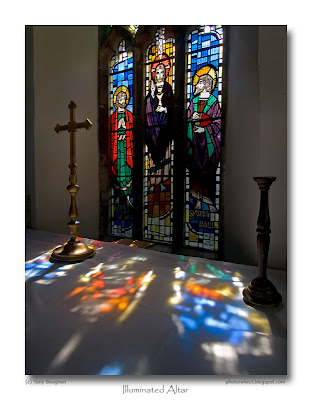 click photo to enlarge
click photo to enlargeThe oldest stained glass that we can still see in our churches is about 900 years old, though stained glass has been made in these islands for at least 1,300 years. Go into the average church and the glass that you will see is likely to be Victorian or from the early twentieth century. There is still much medieval glass to be found, though a lot of it is re-assembled from fragments left over after sixteenth and seventeenth century Puritan iconoclasts had finished smashing it for the idolatry that they felt it represented. A few churches, such as Fairford in Gloucestershire, have their complete, original schemes still in place. Glass also exists from the seventeenth and eighteenth centuries, often heraldic in design, though sometimes showing figures painted in the manner of a work in oils. Then there is the glass from the twentieth century and the turn of the millennium.
It's true to say that all periods have produced good glass, but all have also turned out work that can only be called bad. To my eye, the periods responsible for most of the latter are the Victorian age and later twentieth century. I have a particular dislike for what I call the "cartoon style" that appeared in the 1970s and continued into the following decades. This comprises large, bold, simplified figures, usually one to each light of the window, in strong colours that go together poorly. The drawing often has a stylised angularity, and the faces are peculiarly expressionless. Such glass has neither subtlety, gravitas or beauty - three requisites for a church window.
A while ago I came across one of these windows in the church at Burgh le Marsh, Lincolnshire. I didn't bother to look to see if there was a maker's mark, but I did feel motivated to take a photograph of it. It certainly wasn't the quality of the glass that prompted me: rather it was the way the sun was throwing the colours from the window so that they illuminated the white cloth of the altar below. On that day, at that time, this not very good window was producing a little magic in the way that only stained glass can. I framed my shot from the side to include the cross and one of the flanking candlesticks.
photograph & text (c) T. Boughen
Camera: Olympus E510
Mode: Aperture Priority
Focal Length: 11mm (22mm/44mm equiv.)
F No: f7.1
Shutter Speed: 1/80 seconds
ISO: 100
Exposure Compensation: -1.0 EV
Image Stabilisation: On